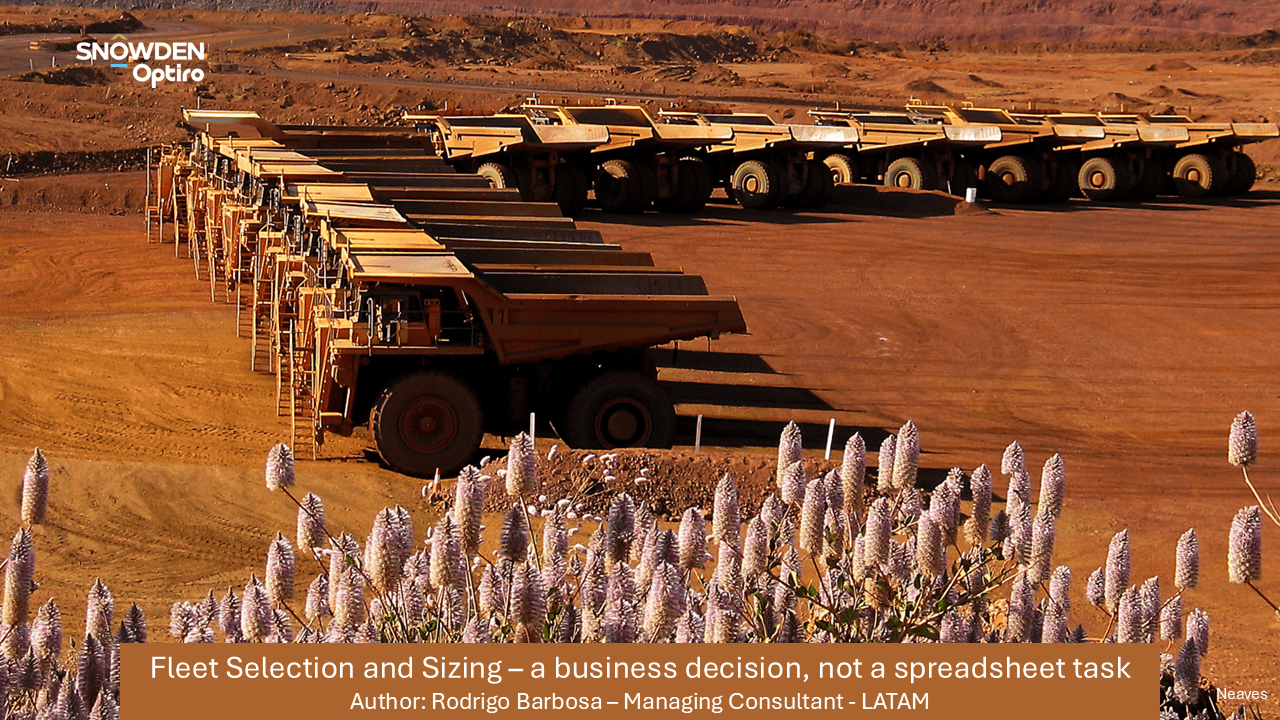

The goal of our 30 Seconds of Info series is to provide valuable technical information that is concise and easily digestible.
These tips serve as an excellent reference for professionals while working on projects.
We will be regularly updating our series by posting new 30 Seconds of Info each week.
30 SECONDS OF RESOURCE ESTIMATION INFORMATION
MULTI-ELEMENT RESOURCE CLASSIFICATION
Where there is a significant economic contribution of elements/commodities other than the primary commodity to the financial value of the deposit, the senior company geologist and CP / QP need to ensure there is sufficient confidence in all the different economic components.
Example 1: An Au deposit with economic Cu and Zn; the Au is fire-assayed and shows sufficient confidence to be modelled and classified as an Indicated Resource. The Cu and Zn have only been analysed in more recent drilling campaigns and therefore have fewer than half the number of assayed samples in the Indicated Au zone. The spacing and sparsity of the Cu and Zn analyses mean that the same confidence in grade continuity cannot be applied to the Au analyses.
Example 2: A hard-rock Li deposit with accessory Cs and Rb; the Li is assayed according to industry standards and shows sufficient confidence to be modelled and classified as an Indicated Resource. The Cs and Rb have been analysed in all samples using XRF, without check analyses at an umpire laboratory using an industry-standard assay method. The lower accuracy and precision (and unknown bias) of the Cs and Rb analyses mean that the same confidence in grade cannot be applied to the Li analyses.
In both of these examples, the contribution of the other commodities should not be reported as part of the overall resource statement, and should not be used as economic components during RPEEE/optimised pit shell modelling.
Author: Julian Aldridge
30 SECONDS OF SAMPLING AND QAQC INFORMATION
SAMPLING
SHOULD YOU USE AIRCORE SAMPLES IN YOUR RESOURCE ESTIMATE?
If carried out to high standards, Aircore samples can approach RC in their level of representivity, although it is not suitable for all commodities and lithologies.
It is always worthwhile looking at the relationship between Aircore and other sampling types (RC or DD) within an area where there is more-or-less equal representivity of both sample types; there should be no bias over the range of reasonable ‘ore-grade’ values.
Author: Ian Glacken
QAQC
ALWAYS USE A ‘MULTIPLOT’ TO REVIEW STANDARD ASSAY RESULTS
Employing a ‘multiplot’ to depict assays received for a set of Standards often allows inadvertent Standards swaps to be readily identified.
Reviewing the same data in isolation on individual control charts may otherwise result in a swap being identified as a ‘failure’ event when in fact the standard is a valid test.
Author: Paul Blackney
SAMPLING
REMEMBER THAT SOME SAMPLING ERRORS CANNOT BE ELIMINATED, BUT THEY CAN BE MINIMISED
In addition to the Fundamental Sampling Error, which is the subject of Gy’s theory and its derivations, the Grouping and Segregation Error (GSE) is a function of the size, nature and constitution of the particles, among other factors.
The GSE certainly can be reduced through judicious practice, but there are circumstances where the GSE can swamp other errors – you need to be aware of these.
Author: Ian Glacken
QAQC
EMPLOY A MINIMUM OF FOUR CERTIFIED REFERENCE MATERIALS (CRMs OR STANDARDS) AT ANY ONE TIME
A typical protocol is to insert CRMs that allow assay accuracy to be monitored at grades equivalent to the anticipated (or known) break-even cut-off grade, the average mineralisation or ore grade, and at a high grade for the deposit.
The fourth CRM should be similar to, but different from, one of these three values – typically the average grade value.
For small drilling campaigns, it may be necessary to increase the CRM submission rate to ensure that a statistically meaningful number of results are obtained for each CRM.
Author: Paul Blackney
SAMPLING
WHAT IS THE SAMPLING CONTRIBUTION TO THE NUGGET EFFECT?
Remember that the sampling error can influence the nugget effect of an orebody, but that the nugget effect, as inferred from a variogram can have more than one component; the inherent nugget, which is a fundamental of the mineralisation and its uniformity (or lack thereof), and poor sampling practice, which can amplify and even swamp the ‘natural’ nugget.
Author: Ian Glacken
QAQC
FIELD DUPLICATE SAMPLES OBTAINED FROM WASTE MATERIALS ADD LITTLE VALUE TO THE ANALYSIS OF SAMPLE PRECISION, PARTICULARLY IN PRECIOUS METAL DEPOSITS
Sampling protocols often dictate the collection of field duplicate samples at a fixed rate relative to the number of routine assay samples collected. In many deposit types, this practice results in a large proportion of data obtained being derived from low-grade waste materials rather than mineralised zones.
This information adds little value to the analysis of sample precision.
A better practice is to adopt sampling protocols that allow field duplicate samples to be selected after mineralised zones have been identified by the geologist.
This approach provides more relevant data but does increase the complexity of the underlying sampling protocol.
Author: Paul Blackney
SAMPLING
MULTI-TIER RIFFLE SPLITTERS CAN ADD TO SAMPLING ERROR
While Jones riffle splitters can give a statistically correct sample split, this is less likely with a multi-tier splitter and unlikely with a rig-mounted multi-tier riffle splitter.
Things to watch out for are the flow of the sample into the splitter (even and continuous), the orientation of the splitter (centred and vertical) and of course the presence of moisture in the sample – even a small amount of water can invalidate the splitting.
Author: Ian Glacken
QAQC
ALWAYS EVALUATE THE CAUSE OF ANY CERTIFIED REFERENCE MATERIAL (CRM) ASSAY RESULTS OUTSIDE OF THE CERTIFIED THREE-STANDARD DEVIATION GRADE RANGE
Statistically, less than three in every 1,000 results should be outside this range, making this protocol a useful tool for identifying when to investigate further.
Some QC protocols dictate that investigations are undertaken if a CRM assay result lies outside of the certified two-standard deviation grade range.
This protocol will lead to a lot of misplaced effort as in excess of 4% of all results should legitimately be outside this range.
If significantly more than 4% of the assay results lie outside of the two-standard deviation range, then further investigation is warranted.
Author: Paul Blackney
SAMPLING
BE SURE TO CHECK THE ORIENTATION OF THE CONE SPLITTER DAILY
While a cone splitter should and generally will give a matched (equiprobable) pair of field duplicates, the orientation of the splitter is all-important in determining this.
The long axis of the splitter needs to be vertical and the widest part of the splitter i.e., the join between the cone and the chute, needs to be horizontal.
This should be checked daily with a magnetic clinometer.
Author: Ian Glacken
QAQC
BLANKS SHOULD NEVER BE INSERTED AT REGULAR INTERVALS WITHIN THE SAMPLE STREAM
It is always much easier for automation of the QAQC process that blanks are inserted at regular intervals, but this is not optimal and is in fact a waste of money.
Since blanks are designed to test contamination between samples due to the preparation equipment, the best ‘value’ from a blank is to be placed within or immediately after a high-grade zone (if these can be identified a priori).
This is a hassle for system design but arguably the value outweighs the cost.
Author: Ian Glacken
QAQC
DON’T FORGET THE DENSITY
In some orebodies, the bulk density or specific gravity is not a major contributor to the outcome, but in the majority of deposits, it is as important to get the density right as it is to ensure correct assays.
This means having a density standard (an aluminium cylinder is preferred) and thinking about doing density duplicate measurements.
The concept of a blank is not so applicable.
Of course, correct bulk density determination is critical for an orebody with oxide and transitional weathered material.
Author: Ian Glacken
These 30 Seconds of Info have been brought to you by Executive Consultant Ian Glacken, Geology Principal Consultant Julian Aldridge, and Geology Advisory Executive Consultant Paul Blackney.
You can read more about them below.
Executive Consultant Ian Glacken
BSc (Hons) (Geology), MSc(Mining Geology), DIC, MSc(Geostatistics), Grad Dip Computing, FAusIMM(CP), FAIG, MIMMM, CEng
Ian is a highly qualified geologist, with postgraduate credentials in geostatistics, mining geology, and computing.
He has over 35 years of extensive experience in the mining industry, having worked on projects worldwide.
His expertise includes resource evaluation, due diligence reviews, public reporting, training and mentoring, quantitative risk assessment, strategic advice, geostatistics, reconciliation, project management, statutory and competent persons’ reporting, and mining geology studies.
With a strong mining production background, Ian is a regular auditor for some of the world’s largest mining companies.
Contact Ian here.
Geology Principal Consultant Julian Aldridge
MSc Mining Geology (MCSM), MESci (Oxon), CGeol, FGS
Julian is a highly experienced geologist with over 17 years of expertise in resource assessment, mineral exploration, and project management of projects at all stages, from grassroots to feasibility.
He possesses a strong skill set in 3D modelling, resource assessment, QA/QC assessment, and data/statistical analysis.
He holds the professional designation of Chartered Geologist (CGeol) from the Geological Society of London, is a Member of the Institute of Materials, Minerals, and Mining (MIMMM) and has experience acting as a Competent Person/Qualified Person.
Prior to working as a consultant, he spent a decade as an exploration geologist, managing drill programs, overseeing geochemical sampling, and conducting geophysical programs in multiple countries.
Julian has an exceptional practical knowledge of modern mapping, sampling, and analysis techniques and has spent time working on remote sites and communicating with diverse cultures, which has honed his ability to analyze and interpret data. He also has expert knowledge of genetic and descriptive metallogenic models.
Contact Julian here.
Geology Advisory Executive Consultant Paul Blackney
BSc(Hons) (Geology), MAusIMM, MAIG
Paul is a highly experienced geologist with over 36 years of technical and operational expertise.
He possesses a diverse skill set that encompasses resource evaluation, technical audits and reviews, geostatistics, reconciliation, grade control, and project management.
Throughout his career, he has gained extensive knowledge and experience in various types of gold deposits, including narrow veins, extreme nugget variations, and porphyry copper-gold styles.
Additionally, he has significant experience in iron ore and exposure to PGE, base metal, mineral sands, and other commodities.
Contact Paul here.
Subscribe here for our podcasts, technical articles and news
